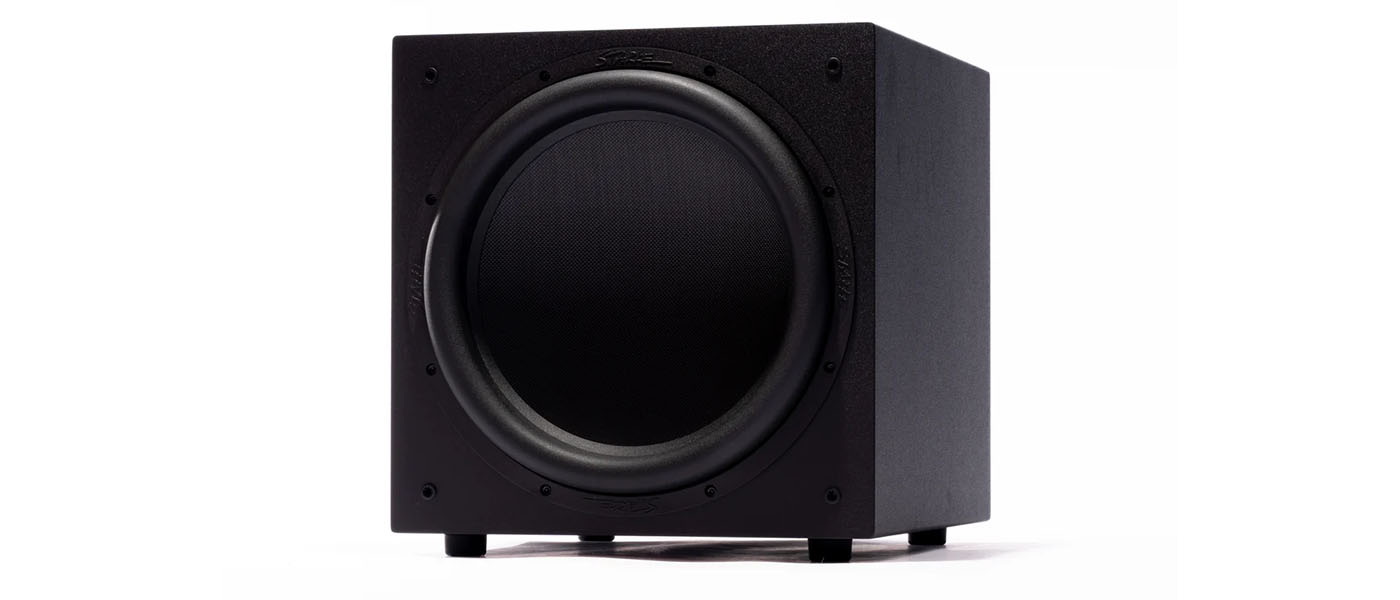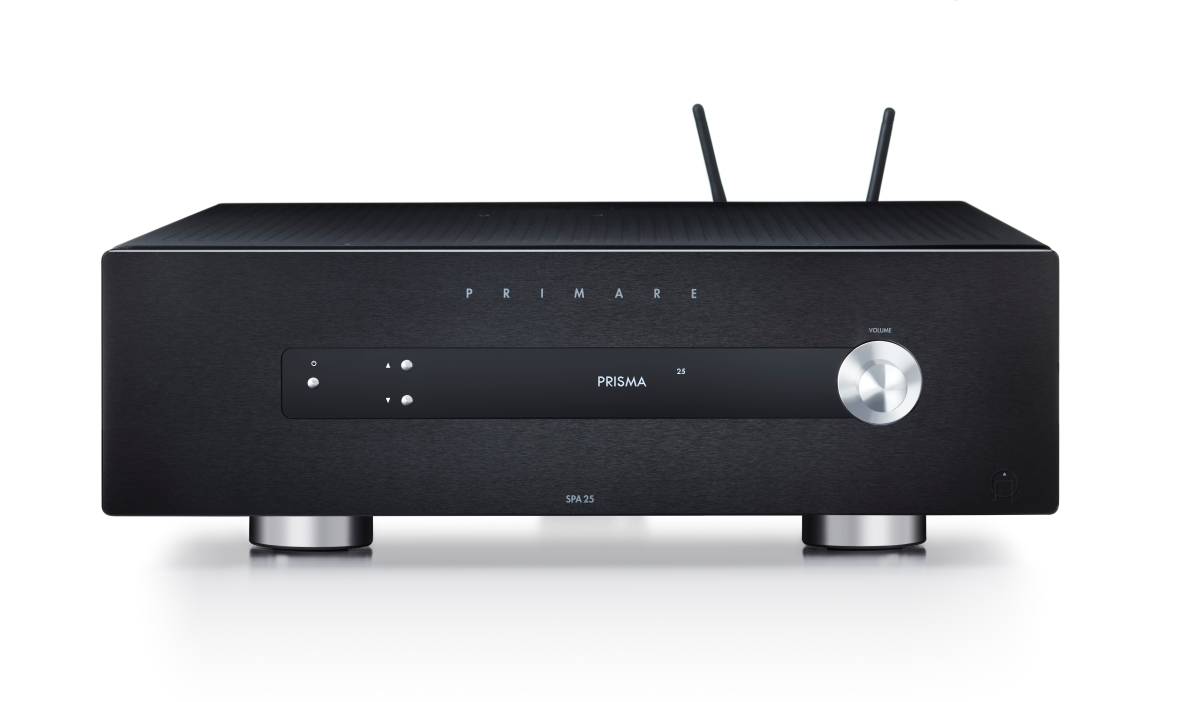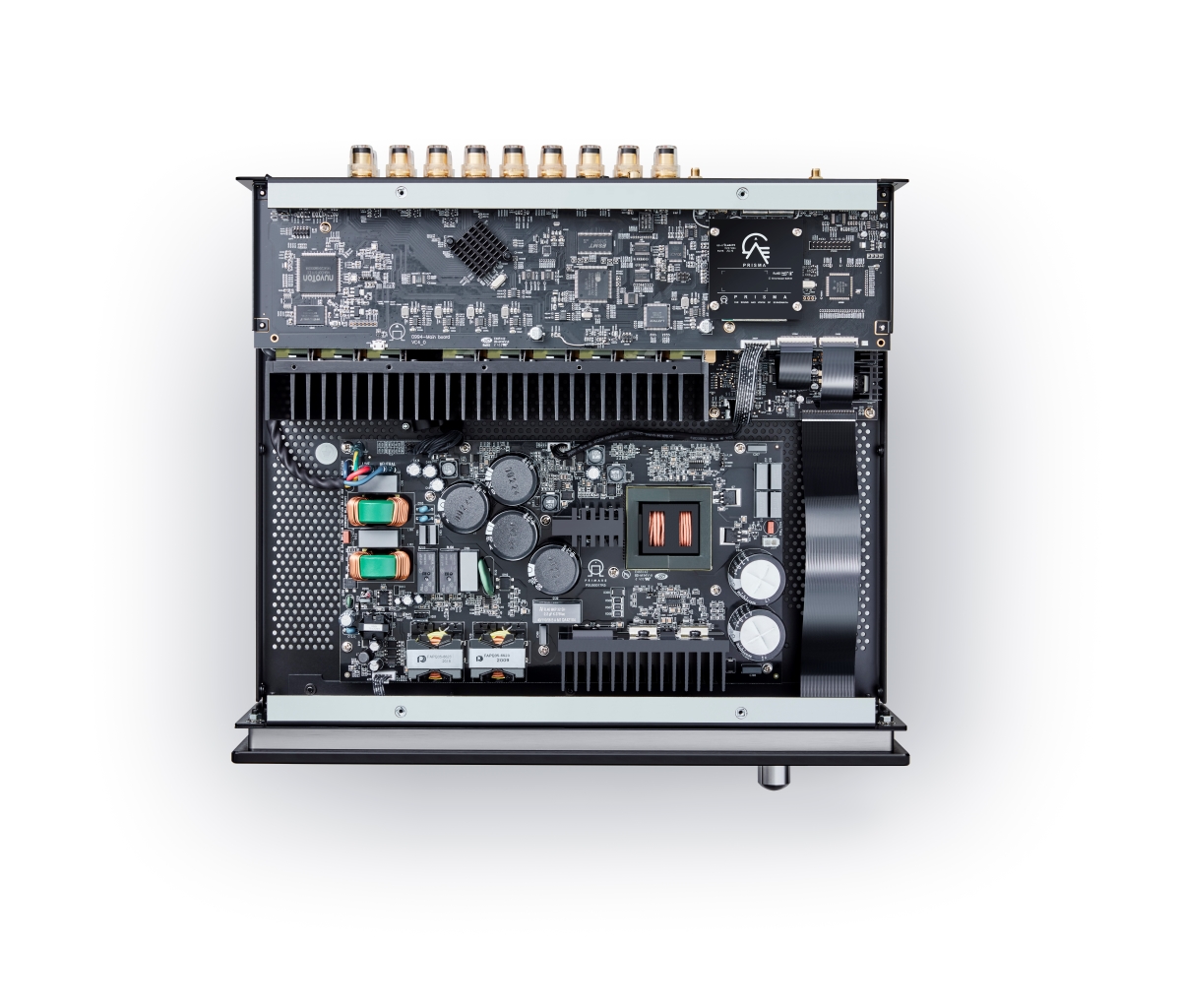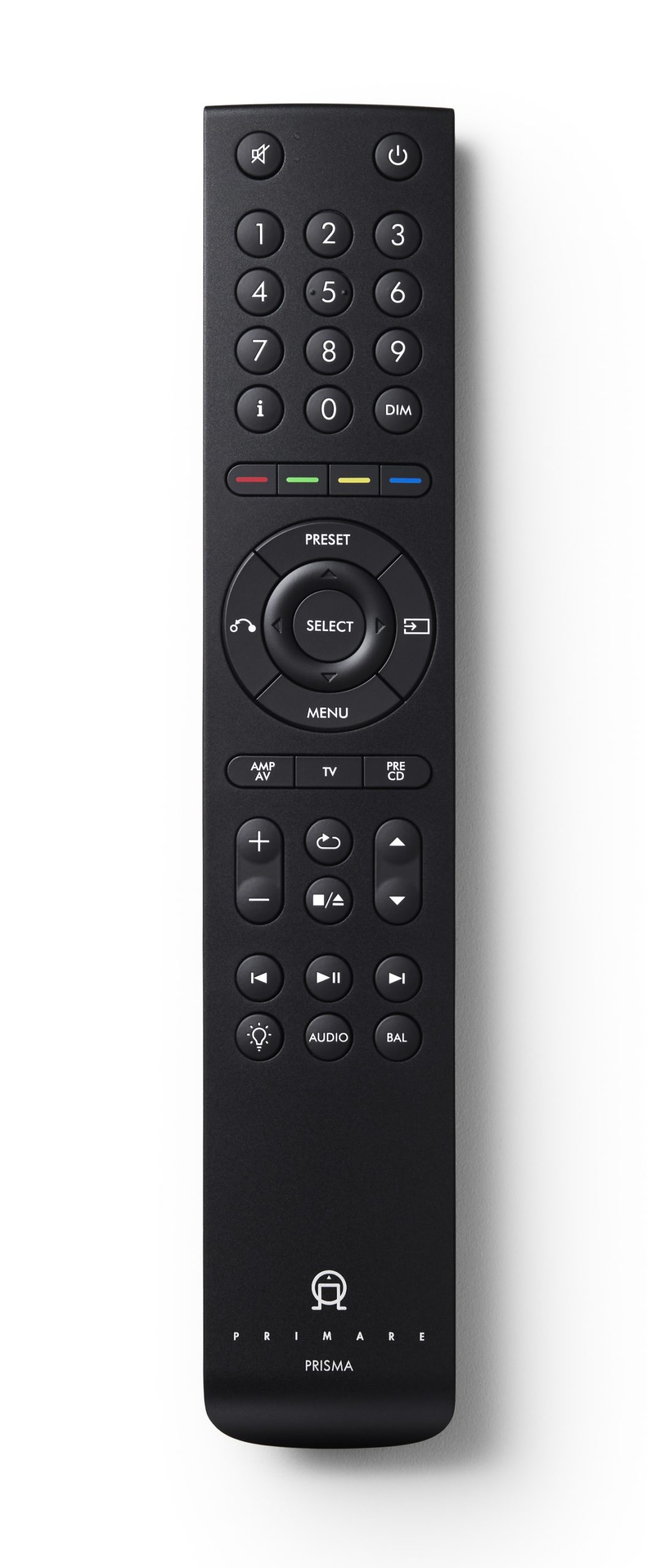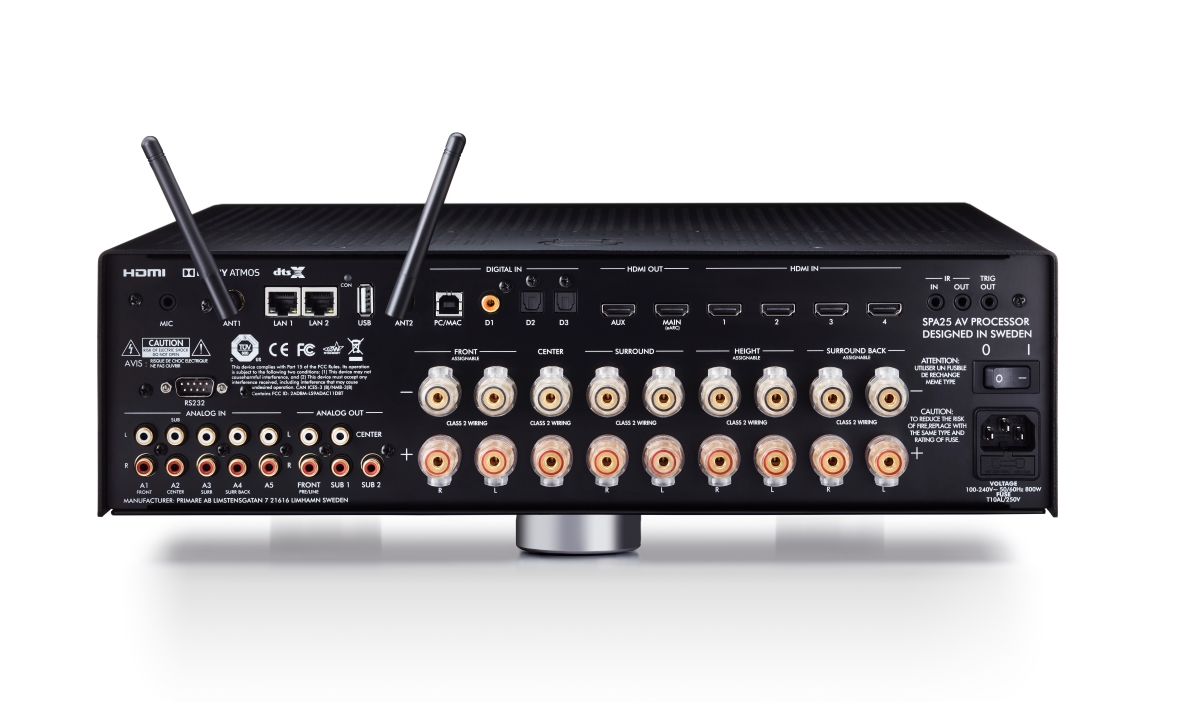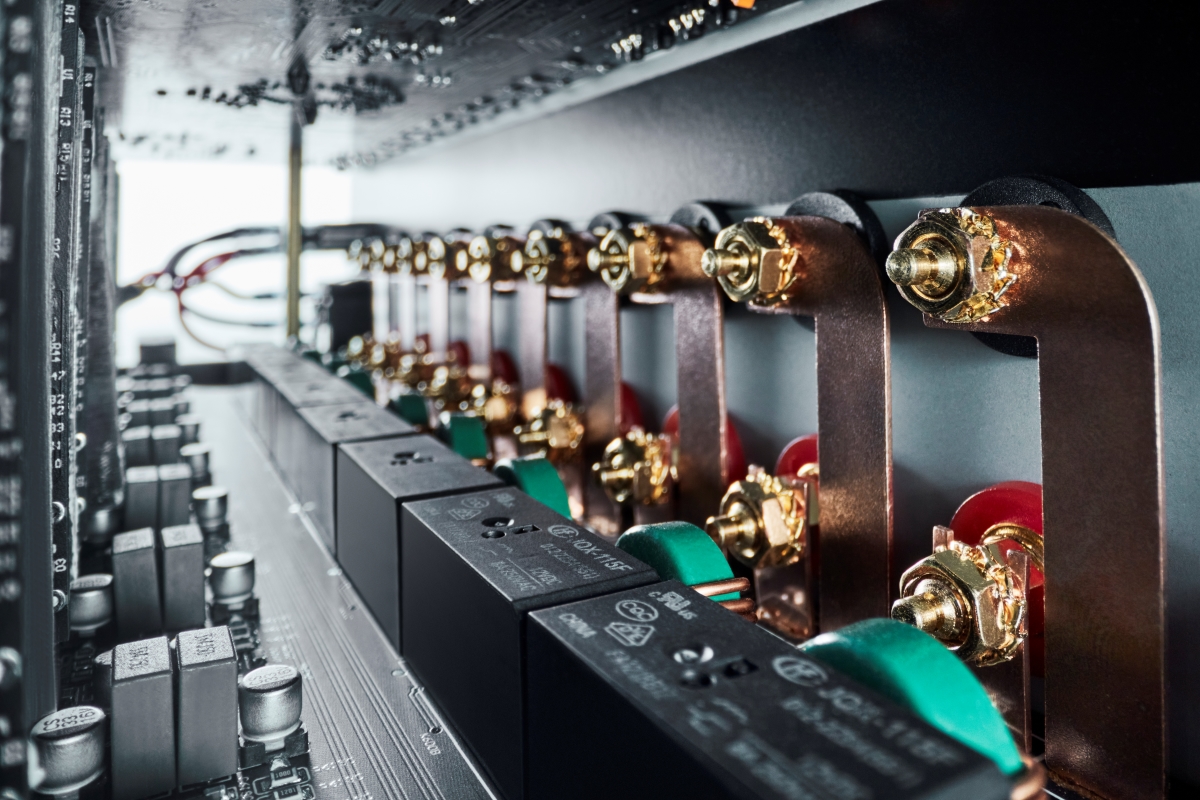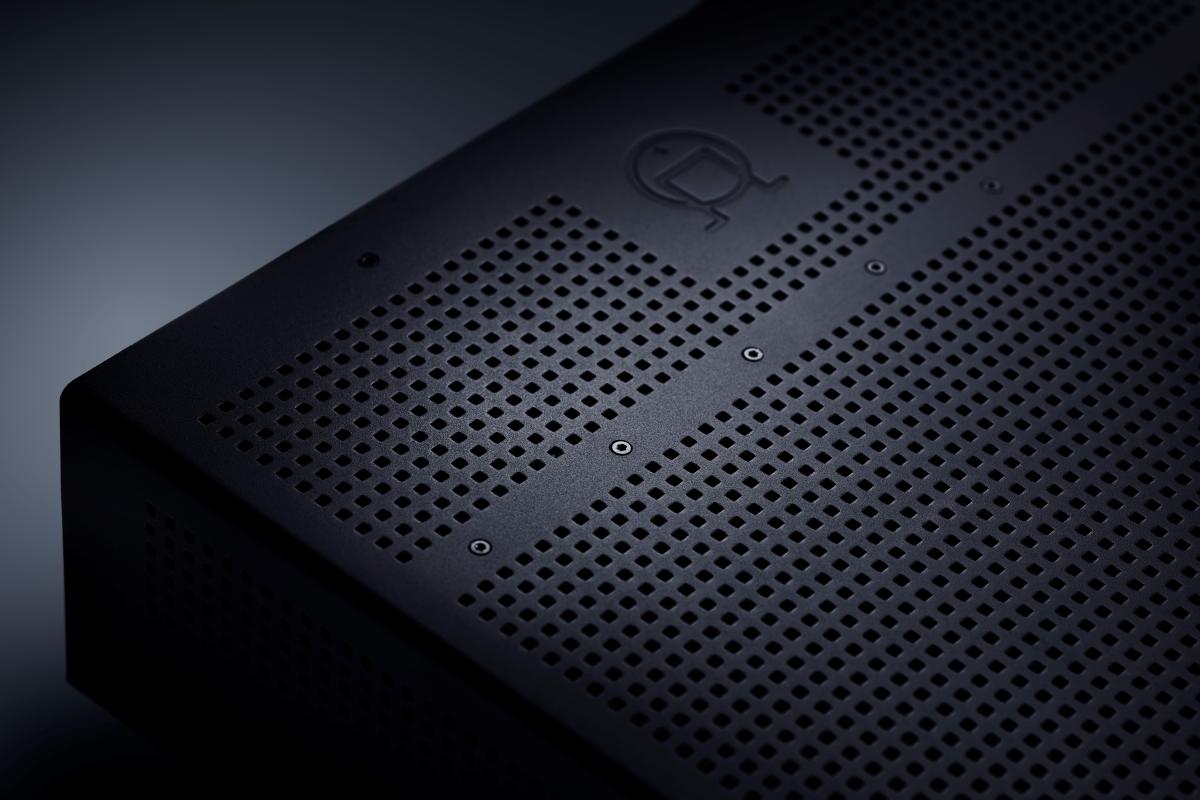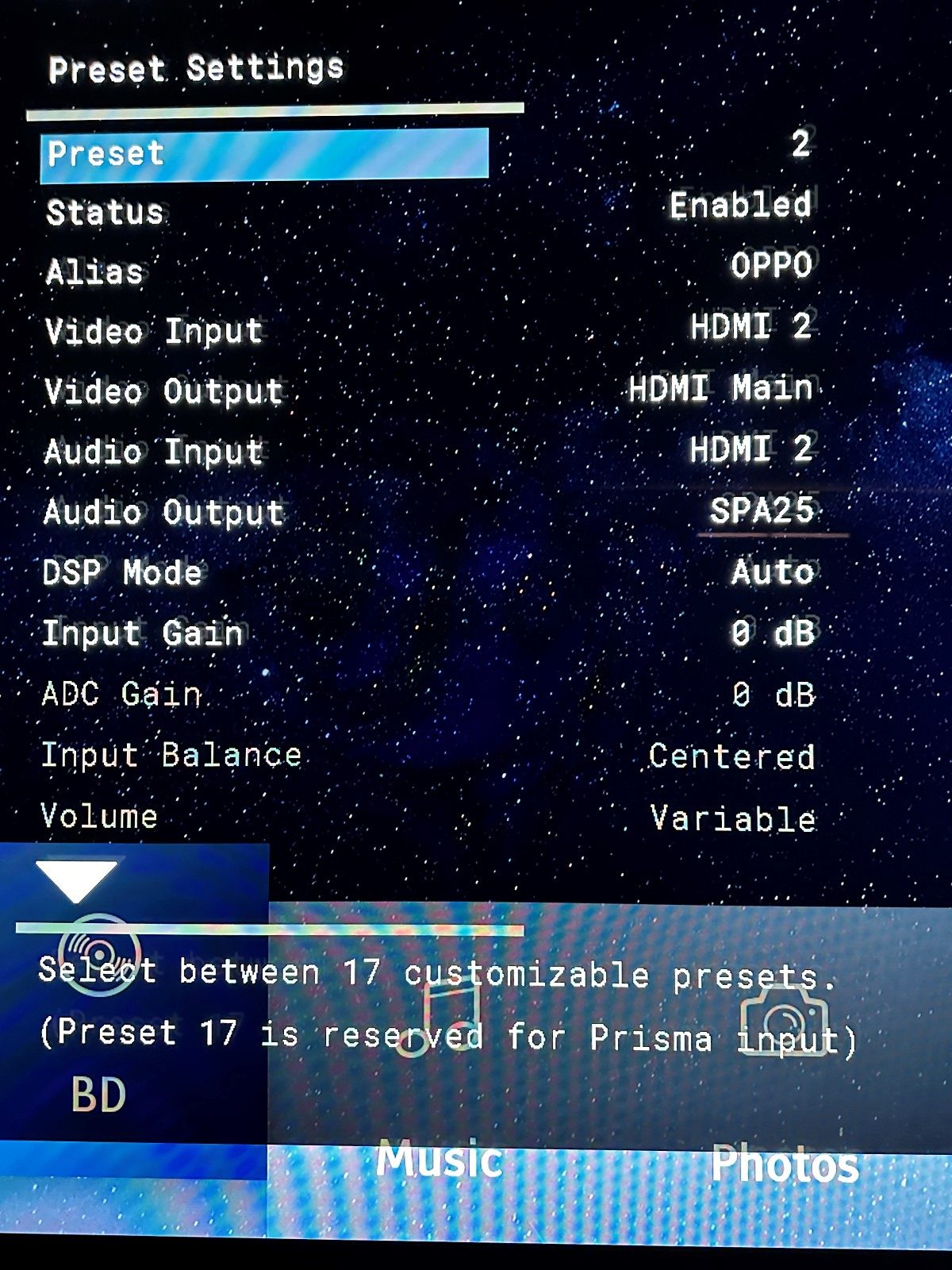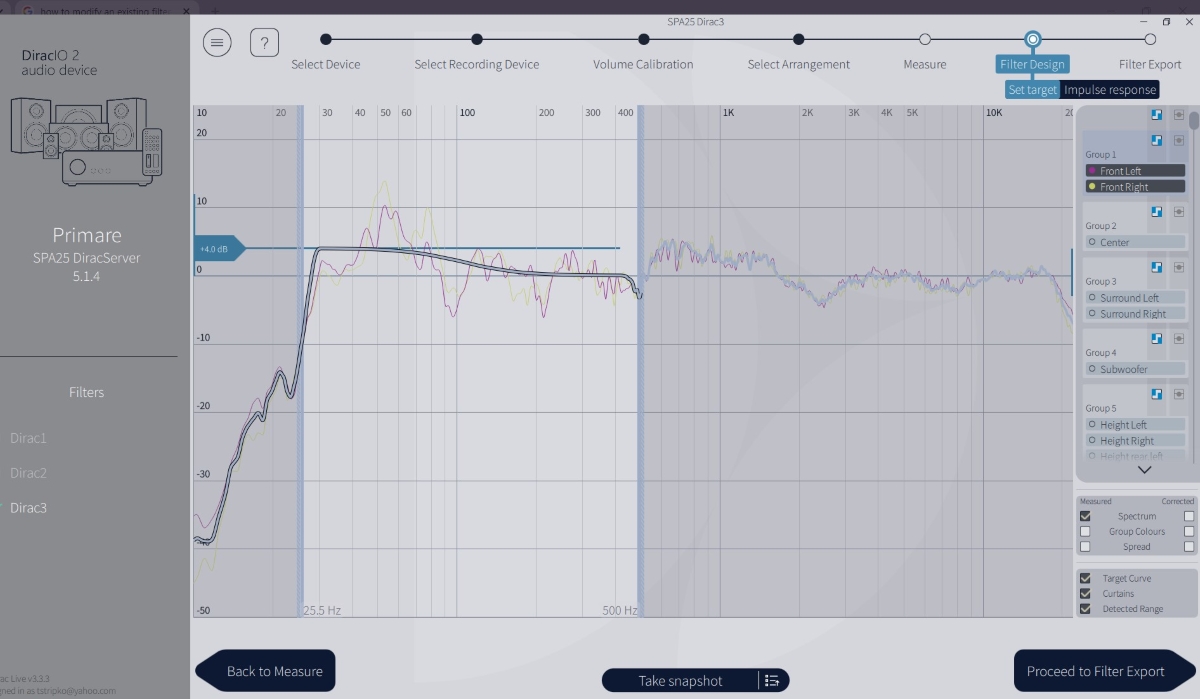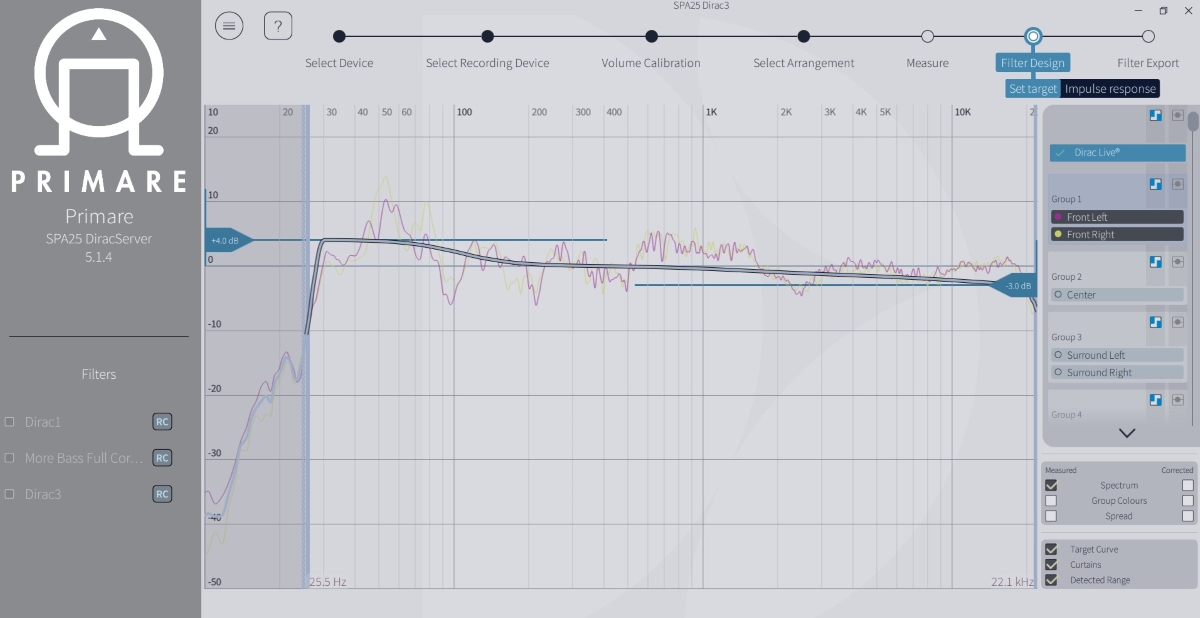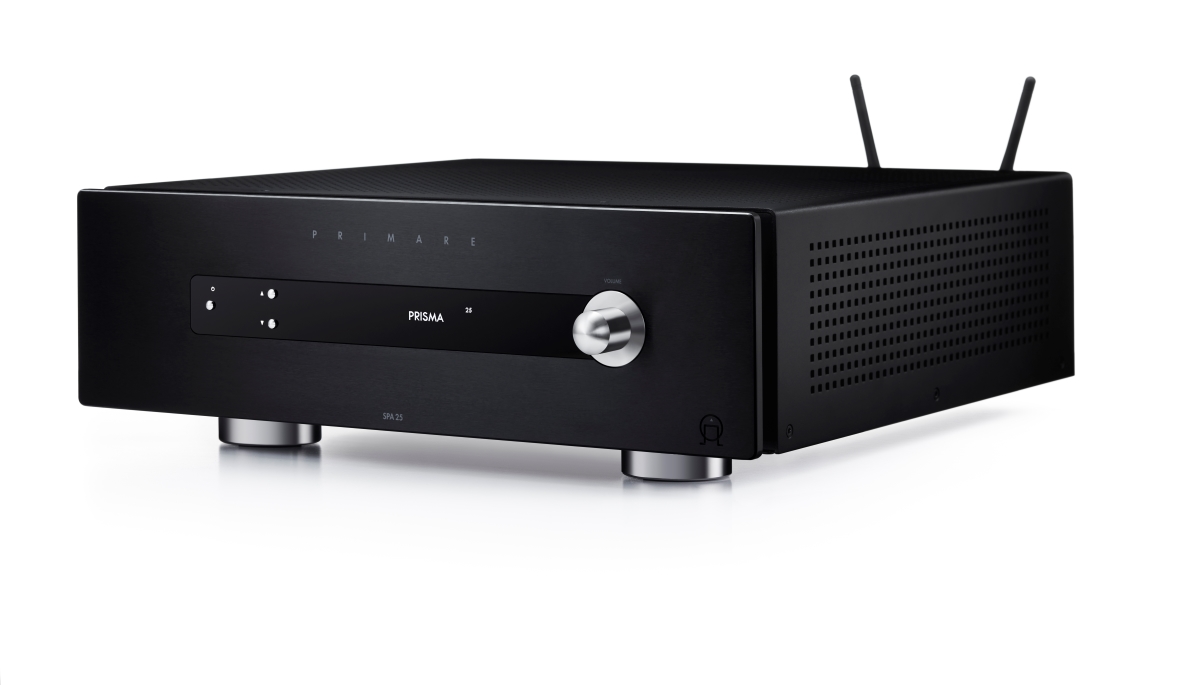The Primare SPA25 is not your average A/V receiver. While it offers much of the same functionality as your typical mainstream-branded home theater receiver, Primare has really focused on delivering top-notch sound quality from both 2-channel and multichannel sources.
Primare SPA25 Multichannel Integrated Amplifier
- Core sound quality is fantastic.
- Very solid construction.
- Modern, clean design.
- Plenty of amp power for most speaker setups.
- Ability to bridge main amp channels if more power is needed.
- Prisma app integrates all your streaming into one location.
For our US-based readers, Primare (pronounced like “Prime Air”) is quite possibly a brand name that you have never heard of. Based out of Sweden, Primare has been providing high quality audio and home cinema gear in Europe since 1985. Primare’s core philosophy is based upon the Swedish word lagam (“laah-goam”), which translates into “just the right amount.” This philosophy dictates that no particular aspect of their products should draw attention to itself. Aesthetics should be balanced with performance and functionality should remain in harmony with technology. Basically, Primare wants to design good- looking components that just work for the end user. I can certainly get behind this approach. While most of Primare’s prior products focused on 2-channel music, the new Prisma line has added multiple home cinema products to the portfolio, including multichannel amplifiers, pre-processors and the SPA25 home cinema integrated amplifier I’m taking a look at here.
Power Amplifier:
Number of powered channels:
9
Power Output:
9 x 90W @4/8 ohms, 810W total power all channels driven
Maximum Output:
145W per channel @8ohms, 250W per channel @4ohms
Bridged Output (2 channels maximum):
290W @8ohms, 450W @4ohms
Frequency Response:
20Hz-22kHz +0.2/-0.5dB (no EQ)
THD+N:
<0.08% @rated power output, <0.02% @10W
Signal to Noise:
>100dB (8ohm, A-weighted at rated power)
Amplifier Topology:
Class D (Hypex UCD250LP)
Output Impedance:
<0.03 ohm
DACS:
2 x 8-channel ESS ES9026Pro
Multichannel Surround Technologies:
Dolby:
Dolby Atmos, Dolby TrueHD, Dolby Digital, Dolby Plus, Dolby Prologic IIx, Dolby Surround (music, movie, night)
DTS:
DTS-X, DTS, DTS ES, DTS Neo:6, DTS-HD Master Audio, DTS HD High-Res Audio, DTS Neural X
Others:
multichannel/2ch PCM/LPCM
Max Number of Processing Channels:
7.1.4 (requires additional 2-channel amplifier for front speakers)
Inputs/Outputs:
HDMI In/Out:
4/2
Analog In:
5 x RCA w/7.1 multi-channel input
Digital In Optical/Coaxial:
2/1 up to 192kHz/24-bit
USB Inputs:
1 USB-B up to 768kHz/32-bit, DSD 512/22.6Mhz, DoP 256/11.2Mhz, 1 x USB-A (updates, backups)
Multichannel Preamp Out:
3.2 (front L/R, center, 2 x sub)
Subwoofer Out:
2 (duplicated)
Number of Speaker Terminals:
9
Other Inputs/Outputs:
1 x RS232, 1 x 3.5mm IR in/out, 1 x 3.5mm 12V Trigger Out
HDMI:
Total Inputs/No. Supporting 8k:
4/0
HDCP 2.2/2.3 Support:
Yes/No
HDMI Outputs:
2 (main/auxiliary)
Max Resolution @ Framerate:
4K @60Hz
Audio Return Channel:
ARC, eARC (HDMI main output)
Video Dynamic Range:
HDR, HDR 10+, Dolby Vision
Other HDMI Features:
HDMI Pass-Through, CEC, On-Screen Display (OSD)
Other Features:
Acoustic Room Correction:
Dirac Live (Limited Bandwidth license included, Full Bandwidth license upgrade available)
Music File Support:
WAV, LPCM, AIFF, FLAC, ALAC, MP3, MP4 (AAC), WMA, OGG, DSD (up to PCM 24/192kHz and DSD 128/5.6MHz)
Streaming Features:
WiFi, Airplay2, Bluetooth, Chromecast, Roon Tested (Roon Ready Certification Pending), Spotify Connect, Prisma Network Player
Networking Inputs:
2 x RJ-45 10/100 ethernet, WiFi
Physical Specifications:
Available Colors:
Titanium, Black
Dimensions (W x H x D):
16.93 x 5.71 x 15.75”
Weight:
26.46 lbs.
Warranty:
N/A
MSRP:
$6,500
Website:
Company:
SECRETS Tags:
Primare, SPA25, Multichannel, Integrated, Amplifier
Secrets Sponsor
I have to say that I was quite taken with the SPA25 upon first unboxing it. Primare is not lying about their “lagom” concept. The SPA25 is certainly elegant yet functional at the same time. The front panel is a solid chunk of aluminum with a wide OLED display screen with three small silver buttons (power and source up/down) embedded towards the left side. The front panel is not just slapped flush against the chassis either. Primare has designed a small, recessed gap between the chassis and front panel, which makes the panel seem to float in front of the rest of the unit. At the right side of the display is a single knob to control the volume level. The volume knob is a solid piece of aluminum and felt great in use, with smooth yet solid detents as you change the volume. My sample came in the “titanium” finish, which really suited the design well. Think brushed aluminum with just a touch of orange/brown to the color and you’ll be in the ballpark. The SPA25 is also available with a black faceplate for those like me who prefer a “blacked-out” look in their equipment racks. However, if you have more modern décor or have the unit out in the open, the titanium color would be my personal choice. The rest of the chassis is a dark charcoal gray steel, with plenty of venting holes in the top and sides to keep temperatures down. Primare has chosen to use only three support feet on the unit, which are silver finished and very solid feeling. Overall, the SPA25 looks and feels like a very high-quality product, which matches up with the MSRP.
Moving around to the back panel, the neat and clean theme continues. I won’t list every single port (look at the specs section if interested) but will call out a few interesting details. There are 2 LAN inputs as well as both USB-A and USB-B connections for computer sources. All accept numerous high-resolution input signals. There is also an IR input and output, though the IR in cannot accept an unfiltered IR signal such as that delivered by a universal control base station like the URC MRX-2 that I use to convert RF to IR signals from my MX-990 remote. The IR in will only work with a filtered IR “eye” sensor, which Primare includes in the box. This is useful if you need to install the SPA25 in a location that doesn’t have direct line-of-sight to the front panel IR sensor. A 12v trigger out is available if you decide to use an external amp. There are four HDMI 2.0 inputs and two HDMI 2.0 outputs. Primare has a very detailed explanation on their website for why they haven’t included HDMI 2.1 inputs on the SPA25. There is some sound logic in Primare’s decision, but I would still prefer to see some degree of futureproofing in a component of this price. There are nine pairs of very solid binding posts for the speakers as well as five pairs of analog RCA inputs. Four of those pairs can be combined into a 7.1 multichannel analog input if you need it. There are also RCA pre-outs for the left, right, center, and two subwoofer channels so you can use external amplification for the front three channels if you so desire.
Inside the unit, Primare uses some design tweaks to ensure the best possible audio performance such as ultra-short signal paths, 4-layer double-sided circuit boards, and surface-mounted components. They have also decided to use Class D amplification in the SPA25, which is still a fairly rare sight in the world of A/V receivers. Even better, they chose to use the Hypex UCD250LP amplifier module. I have been using Class D amps in my reference system for almost 15 years now and have been fortunate to try out almost every Class D amplifier module available. Hypex units (particularly their NCore products) are some of my favorites as they deliver excellent overall sound quality. The UCD250LP allows the SPA25 to deliver 90W to each of its nine channels (@4 or 8ohms) with all channels driven. The adaptive power supply allows the amp to output 145W @8 ohms or 250W @4 Ohms to any active channel up to a maximum of 810W total. If you only run a 5.1 system (with 8-ohm speakers), this allows the SPA25 to output 145W to all five channels. The SPA25 can also be used in a bi-amped mode for the front left and right channels. This uses up four available amp channels but boosts power to 290W @8 ohms or a whopping 450W @4ohms. If you only run a 5.1 or 7.1 system, this is a great way to put some serious power to your mains when listening to stereo sources.
Rounding out the features is Primare’s new Prisma remote control. This is a nicely designed remote, with full backlighting (amen) and the ability to control every Primare product yet made. On the software side, the SPA25 can use Primare’s Prisma network player platform, which can be controlled from any iOS or Android phone or tablet. The Prisma network player integrates with AirPlay2, Bluetooth, Chromecast, and Spotify connect. There is also the Prisma app (iOS or Android) that can be used to play back media from a network drive, storage device connected via USB, TIDAL, or internet radio. The SPA25 is also Roon Tested, with Roon Ready certification in the works. Dirac Live is used for room correction with the “Limited Bandwidth” version included. If you want to upgrade to the “Full Bandwidth” version, you can do so from Dirac’s website for a small fee ($99 at the time I wrote this). Given the $6,500 MSRP on the SPA25, I would really like to see the full bandwidth version included. Sadly, the SPA25 does not support Dirac Live Bass Control or Dirac Live Active Room Treatment (ART) and it is unlikely that those features can be added in the future.
The SPA25 arrived at my home in a sturdy box that should easily absorb any minor shipping mishaps. Upon opening the box, I was greeted by a large, full-color poster sheet detailing Primare’s company mission on one side with a basic overview of the SPA25 on the other side. Under the poster sheet was a Primare-labelled box that contained all of the included accessories including the Prisma remote, power cable, batteries, 12v trigger cable, calibration microphone, additional documentation, and a Primare-branded non-contact voltage tester. The unit itself was protected by firm foam packaging and was wrapped in a cloth bag. After getting the SPA25 out of the packaging I slid it into place within my Salamander equipment rack where my reference Trinnov Altitude32 pre-processor usually resides. As I was replacing a pre-pro with an integrated amp, I had to do a bit more cabling work than usual, moving speaker cables from my reference amps (Apollon Audio Purifi Class D units) over to the SPA25. I also had to make some choices at this point. I’m currently running a 7.2.6 setup in my media room but the SPA25 only supports nine discrete channels, or 11 if you have access to an additional 2-channel amp. I figured that most buyers of the SPA25 would run it like an A/V receiver so wanted to test it using only the internal amplification, which limited me to nine channels total. I decided that a 5.2.4 Dolby Atmos-type configuration would be the best compromise, so I left my rear surrounds and middle height channels disconnected. My two Hsu subwoofers went into the Sub1 and Sub2 RCA outputs. Banana-plugged Kimber4VS and KWIK-12 wire connected the SPA25 to my Sonus faber Olympica bed layer speakers and Sonus faber Palladio height speakers. While I have a very strong mesh Wi-Fi network in my home, I still prefer a wired connection for critical devices, so I connected a LAN cable to the SPA25’s LAN1 port for Roon Connectivity as well as Dirac calibration (which cannot be done via Wi-Fi). As for sources, my Comcast Xfinity cable box, Oppo UDP-205 4K Blu-ray player, and Amazon FireStick 4K Max ate up the first three HDMI inputs. That left my Xbox Series X console and a few “retro-gaming” devices that use HDMI. The SPA25’s lack of HDMI 2.1 ports somewhat simplified my potential options. I’ve gotten spoiled by 4K 120Hz gaming via the Xbox Series X, so I kept it connected directly to an HDMI 2.1 port on my Sony 83” A90J OLED display and figured that I’d just use HDMI eARC to send audio back to the SPA25. I plugged my RetroPie gaming device into the last remaining HDMI port on the SPA25 and called it a day. While I understand that four inputs are more than enough for most users, those of you with larger systems may need to rely on HDMI eARC from your display to get all of your devices connected. As mentioned earlier, the IR sensor on the back can’t accept an unfiltered IR signal from remote control systems, so I stuck an IR flasher to the SPA25’s front display so that I could use my trusty URC MX-990 universal remote for control purposes. The IR code set for the SPA25 is a bit limited (for example, there are no discrete power on/off commands), but you can program any of the functionality offered by the Prisma remote using either learning or Pronto HEX codes. IP control is in the works (Control4, Crestron, Elan, and Savant), and may be available by the time you read this.
With everything connected, I powered up the SPA25 and began configuring it using the on-screen menus. The menu system is very easy to use and enabled me to get the Primare setup in about 15 minutes. A quick test showed that all of the speakers were working correctly, so I moved on to the Dirac calibration. For this first calibration, I stuck with the included “Limited Bandwidth” Dirac license and the Primare-supplied microphone. I ran Dirac live from a Windows 11 laptop and Dirac immediately identified the SPA25 on my network. After taking about 12 measurements, I let Dirac finish its processing. The SPA25 allows you to save three different Dirac calibrations, so I saved this to slot 1. Taking a look at my results I noticed that the measurements for my subwoofers looked a bit odd, particularly compared to measurements I’ve taken with other Dirac-equipped devices. In particular, I wasn’t seeing the same level of deep bass extension I usually get. Digging into the Primare’s manual, I saw that the SPA25 only processes a single subwoofer channel, so even though there are two sub outputs they both get the same signal. As I run two different Hsu Research sub models (one sealed, one ported), being able to independently correct each sub is very important to generate the best bass performance in my room. I would love to see Primare add true independent subwoofer support to the SPA25 which could also open up the possibility of running Dirac Live Bass Control. A workaround would be to run something like a MiniDSP to independently tweak multiple subwoofers, but that adds an additional layer of complexity and cost. My last task was to set up the Primare for use with Roon. As the SPA25 is currently only “Roon Tested” (Roon Ready certification should be complete by end of 2024) I had to use AirPlay for connectivity, but my Roon server identified the SPA25 without issue.

Carmen Gomes, “Sings the Blues”
Now that the setup was complete, it was finally time to sit down and give the SPA25 a whirl. As I always do with any component, I started off with some high quality 2-channel recordings to get a feel for the Primare’s basic sound quality. While I typically use Roon for playback, the 16-bit/44.1kHz signal limitation imposed by the AirPlay connection had me look at other options to ensure that I was feeding the best possible signal to the Primare. I tried using Primare’s Prisma streaming app for playback, but it struggled with high-resolution files above 24-bit/96kHz. Switching to my Oppo UDP-205 player to play back the files stored on my NAS drive, I loaded up “Sinner’s Prayer” from Carmen Gomes Inc.’s “Carmen Gomes Sings the Blues” (Sound Liaison, DXD 352Hz). The sound that came out of my Olympica speakers was simply amazing. Rich, full, spacious, detailed, airy – any of these adjectives could be used to describe what I was hearing. Most impressive was the overall sense of naturalness to the sound. From the big acoustic bass line to the sparkly shimmer in the cymbals of the drum kit, the SPA25 presented a truly engaging and realistic presentation. Midrange purity was exceptional as well, with Gomes’ vocals and the guitar sounding exceptionally detailed and “live.” Nothing sounded too bright or too dark, just “right.” While this is a very well-recorded album, the sense of space I got while listening really made it sound like I was right there in the small studio where this was recorded live. As this was uncorrected sound, the drums and bass had a little too much kick, the result of a room mode around 55kHz. Enabling Dirac correction fixed this extra bass and also filled in two dips around the 100 and 200Hz regions, which are a result of my seating position. Restarting “Sinner’s Prayer” let me immediately hear the improvements Dirac brought in the bass region. However, while the bass response was now cleaner, punchier, and more accurate, the “Limited Bandwidth” Dirac license limited the room correction to 500Hz. Thinking I could make things sound even better, I installed a “Full Bandwidth” Dirac license provided by Primare and performed a new calibration run using my Cross Spectrum Labs-calibrated UMIK-2 microphone instead of the included mic. This produced an audibly better Dirac profile, which I further tweaked by boosting the bass by 4dB to make things a bit more exciting. I also added a gentle downward slope (-3dB) from the midrange into the treble, which my ears find a bit more pleasing than a completely flat frequency response. I was really pleased with the sound of this new Dirac profile and found that it didn’t hurt the overall clarity of the midrange and treble too much. From past experiences with Dirac, I’ve found that full range correction will often introduce a bit of a “haze” to the upper registers, but that was minimal through the SPA25. If I’m being really nit-picky, there may have been a slight loss in the overall sense of spaciousness and naturalness to the sound with the full range correction, but I could only detect it with excellent source material. Anything less than perfect recordings (i.e. most movies/pop/rock/EDM/etc.) benefitted significantly from the full range correction so I left it on for the remainder of my review period.

Depeche Mode, “Violator”
With the system now fully calibrated, I turned my attention to multichannel music. I started with a long-time favorite of mine that can really test a system – Depeche Mode’s “Violator” (DVD – 5.1 DTS 96kHz/24-bit). “Sweetest Perfection’s” first three minutes are filled with tons of highly nuanced electronic effects and crystal-clear vocals. Through the SPA25, those electronic sounds were bouncing around all five speakers while the vocals stayed wonderfully centered in the front sound stage. The sense of immersion was wonderful and the movement of sounds around the room was smooth, which further drew me into the audio experience. When the bass finally kicks in after the three-minute mark, it was really tight and clean. This song doesn’t pummel you with deep bass, but it packs enough punch to hit you in the chest if you’ve got the volume up loud enough – which I did. In fact, I kept pushing the volume louder and louder, looking for signs of stress from the Primare’s Hypex amps. I had this song cranked to stupid loud levels at one point (the on-screen display makes it easy to see what level you’re at), and the only thing I noticed was a slightly brighter treble presentation as I started getting towards the SPA25’s output limit. The bass was still tight and thumping, and the midrange retained its clarity and musicality. I don’t think I’ve ever heard another receiver output this much volume while keeping its composure. After this torture test, I felt the top of the SPA25 and found it was merely warm to the touch. Why more manufacturers aren’t using these Hypex amp modules is simply beyond me.
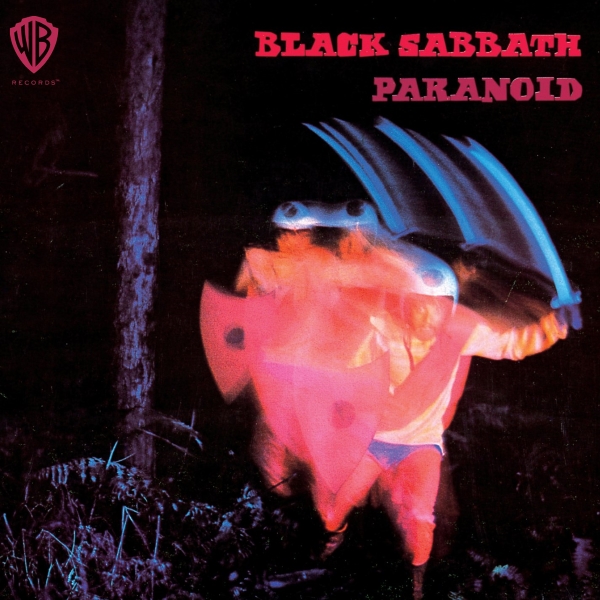
Black Sabbath, “Paranoid”
Black Sabbath’s “Paranoid” was recently re-released on Blu-ray audio and as it included a 4.0 DTS-HD Master Audio 192kHz/24-bit “Quadio” mix I simply had to pick up a copy. After hearing “War Pigs” in two channels for so long, the high-res 4.0 mix was a bit of a revelation for me. From the opening chord strike, the superior clarity and fullness of the sound is striking and sounded killer through the SPA25. Ozzy’s vocals are still somewhat recessed on this mix, but the exceptional midrange purity of the Primare kept everything easy to understand. The overdriven guitars cut through the mix nicely and the SPA25’s smooth presentation really highlighted Tony Iommi’s exceptional tone. Geezer Butler’s bass lines sounded great too, with far more detail than I’ve ever noticed before. The SPA25’s ability to create seamless surround sound was really highlighted with the “wailing siren” sound around the 30 second mark that moves back-and-forth between the surround channels. The transition from one surround to the other was so smooth that I thought my rear surrounds were actually being used. To say that this is the best I’ve ever heard this album sound is an understatement and the “Quadio” mix is simply the best way yet to experience “Paranoid.” The overall sound was very “analog” to my ears, which is about the highest compliment I can give. If you are a Black Sabbath fan I highly recommend picking up a copy before they are all gone.
Before getting into discussing some film content, I have to mention that I did run into some issues with video sources running through the SPA25. When I first setup the Primare, I was getting frequent issues where the SPA25 would display the picture from either my Amazon Fire Stick 4K Max or Oppo player but wouldn’t output any sound. Oddly, I never experienced this issue with any of my 1080p devices, like the Comcast cable box or RetroPi system. Switching inputs didn’t fix the problem, nor did powering off the Primare and turning it back on. The only thing that would resolve the issue was a full reset of the unit via the rear power switch. Sometimes I’d have to “reset” the unit two or three times to fix the problem. The team at Primare did a lot of troubleshooting with me as they hadn’t experienced this issue before, even when using some of the same source gear. After a lot of trial-and-error, what finally resolved things was completely disabling HDMI eARC on the Primare in conjunction with disabling eARC on my Sony XR- 83A90J display. While this fixed the no sound issue, it meant I could no longer run the audio from my Xbox Series X through my Sony display and back to the SPA25 via eARC. So now I had to reallocate the Primare’s fourth HDMI input over to the Xbox and sacrifice 120Hz gaming in exchange for surround sound. As per Primare, my setup was the first one where they have seen issues like this, so hopefully it is just a specific issue with my Sony display’s eARC signal that was causing the problem.

Inside Out 2
With my audio issues addressed, I queued up the recent Disney/Pixar release “Inside Out 2.” As is typical with Pixar releases, the movie grabs your attention from the opening sequence, with some powerful electric guitar-driven music. This carries into Riley’s championship hockey game with a riot of sound – lots of stick scraping, skates cutting ice, and pucks hitting the boards. All of these sounded detailed and clear though the SPA25 and combined to create a truly immersive sound field. However, what really impressed me were some of the more subtle sounds, like the slight echo of the voices in Riley’s head or the sound made by a “memory marble” rolling down the storage rack into another – the glassy thunk was just spot on. Even the sound of the emotions pressing the console buttons was so life-like. For me, the realism in these little details is what draws me into the movie and is also what separates a good piece of home theater gear from a truly great one. The Primare was certainly pushing into the “great” category for me. The next scene of headquarters “demo day” is full of destruction and some really powerful bass, like when a wrecking ball comes smashing through the headquarters window.

Bob Marley: One Love
Given the Primare’s impressive performance with music sources, I thought the Bob Marley biopic “One Love” would be the perfect movie to showcase the SPA25’s chops and I was right. While the streaming services are only delivering a 24-bit/48kHz highly compressed Dolby Digital+ Atmos track, “One Love” still sounded fantastic. Early in the movie, the band is rehearsing “I Shot the Sheriff” in Bob’s home. Bob’s vocals are stunningly clear, with a very natural timbre. The organ and guitar sounded like I was in the room and the bass had a tone that immediately identified itself as a Fender. The horns were bright, without being harsh. The studio and concert scenes kick things up a notch, with a bigger and more immersive sound which was delivered wonderfully by the SPA25. The height channels and surrounds were more active and really helped create that sense of being a part of the audience. I only wished that there were more concert scenes throughout the film as they just sounded so good. While the fantastic mix on “One Love” deserves a lot of credit for how much I enjoyed this film, the Primare’s faithful reproduction gets equal kudos.

Dune: Part Two
To give the SPA25 a full-fledged workout with a killer lossless soundtrack, I spun up the 4K Blu-ray of “Dune: Part Two” on my Oppo player. The lossless Dolby Atmos soundtrack on this film is about as good as they come, with excellent use of the surround and height channels. Early in the film, there is a scene with Stilgar and Lady Jessica within Sietch Tabr’s sacred water basin. The reverberation in the stone cavern was reproduced impressively by the Primare, with the voices echoing throughout my room from all directions. Insane bass is present throughout the entire film, particularly when the worms and spice harvesters make an appearance. While the bass was more than enough to shake my room, I did notice a slight loss of deep bass clarity compared to my Trinnov-driven reference setup or in comparison to what I experienced when I had the Storm Audio Core 16 (which had Dirac Live Bass Control) controlling my subwoofers. I’ll chalk the minor difference up to the Primare’s inability to optimize my two subwoofers independently and its less sophisticated bass management capabilities. Considering the price difference between either of these setups and the SPA25, I can’t complain too much as the Primare still sounded great. The sheer dynamics of this soundtrack are impressive, and the SPA25 had the raw power to go from subtle, quiet moments to big, bombastic ones with ease. Overall, the sound was nothing less than reference class and the best I have ever experienced from a receiver.
Secrets Sponsor
Considering the truly exceptional audio performance, strong amplification, premium design, and excellent build quality offered by the SPA25, its $6,500 MSRP seems pretty justified to me. To put things into perspective, any decent 2-channel preamp would run at least $2,000 and some high-quality stereo amplification would run at least another $1,000 so let’s call it $3,000 total. The SPA25 offers 11 channels of preamp processing and 9 channels of excellent-sounding amplification for around double that 2-channel figure. Toss in the Dirac room correction and the convenience of a single integrated component and the SPA25’s value further improves.
- Core sound quality is fantastic.
- Very solid construction.
- Modern, clean design.
- Plenty of amp power for most speaker setups.
- Ability to bridge main amp channels if more power is needed.
- Prisma app integrates all your streaming into one location.
- Can’t calibrate 2 subwoofers independently.
- No Dirac Live Bass Control or Active Room Treatment (ART).
- Switch to a more reliable HDMI chipset with HDMI 2.1 support.
- Roon Ready certification still pending.
- No multi-zone support.
- No IP control (yet).
- Prisma app struggles with high-resolution files.
I must admit that when I saw Primare listing the SPA25 as a “Home Cinema Integrated Amplifier” as opposed to giving it the title of “A/V Receiver,” I was a bit skeptical. However, in the case of the SPA25, Primare’s product description really is accurate. The SPA25 has the sonic chops to stand toe-to-toe with many of the two channel integrated amplifiers on the market today, while providing enough processing power and amplifier channels to serve as the hub in a high-quality home theater setup. Without a shadow of a doubt, the Primare SPA25 is the best-sounding A/V “receiver” that I have ever heard when it comes to either two channel or multichannel music sources. The SPA25’s full bottom end, beautifully natural midrange, and wonderfully detailed treble make just about any source sound great. The Primare’s imaging and sound stage presentation is on a level far above any other A/V receiver I’ve yet listened to and rivals what I’ve heard from the best A/V pre/pros or high-end “audiophile” two-channel gear. When an audio product sounds as good as the SPA25 does, it’s hard for me to say anything negative, but the Primare does have some flaws when it comes to its use in a home theater system. While the SPA25’s exceptional sound quality transfers over to movie soundtracks, the lack of independent calibration of the two subwoofer outputs limits the overall low-end performance and means that you can’t use Dirac Live Bass Control. The audio and video issues I had with 4K sources via HDMI and the inability to use HDMI eARC as intended were also concerning, but these issues could have been caused by my associated equipment. If you are an “audiophile” at heart and are looking for a central hub for a multichannel system, I would highly recommend checking out the Primare SPA25.


